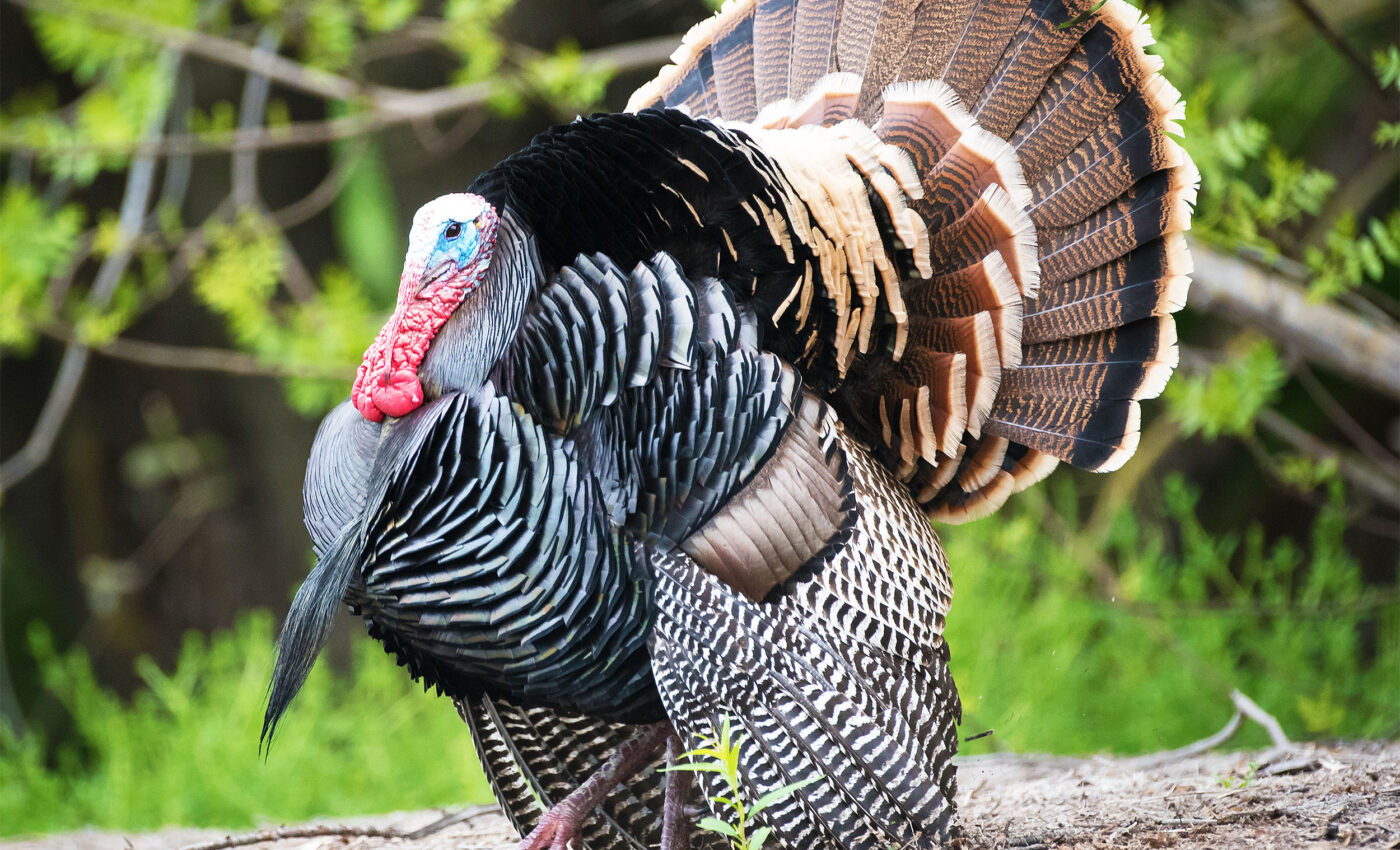
Uncovering the secrets of wild turkey nesting habits
In a study that challenges long-standing assumptions, researchers have uncovered surprising insights into the nesting success of wild turkeys.
Contrary to popular belief, researchers from North Carolina State University discovered that rainfall during nesting season may not be as crucial to their reproductive success as previously thought. This revelation opens new avenues for understanding how climate change could impact these fascinating birds.
Weather and wild turkey nesting success
The aim of this study was to investigate the influence of weather conditions during nesting season on wild turkey reproductive success and to extrapolate these findings to assess the potential impact of climate change on turkey populations.
Wesley Boone, corresponding author and postdoctoral researcher at North Carolina State University, explains, “We wanted to know how weather influences nesting success right now and then use that data to assess how climate change may influence wild turkey populations in the future.”
Wild turkeys, known for their adaptability to a wide range of environmental conditions, face numerous factors that can affect their reproductive success.
This study focused specifically on two critical environmental conditions: precipitation and temperature. The goal was to understand their influence on nest survival during the incubation period.
“Wild turkeys are fairly tolerant of a wide range of conditions, but there are a host of factors that can affect their reproductive success,” says Chris Moorman, co-author of the study and a professor of forestry and environmental resources at NC State. “This work focused on two of those conditions, precipitation and temperature, and how they may influence nest survival during the incubation period.”
Study methodology and results
To investigate the impact of weather conditions on wild turkey nesting success, researchers closely examined daily nest survival, which measures whether the eggs within a nest survive over a 24-hour period.
Over a span of eight years, the team monitored 715 turkey nests, meticulously collecting daily data on precipitation and temperature throughout the entire incubation period. With temperature, researchers analyzed the variations between nest temperatures and historical averages.
The study’s most astonishing discovery was that precipitation during nesting had no significant correlation with daily nest survival. This finding contradicts the widely held belief that increased rainfall heightens the chances of egg mortality.
“The most surprising finding was that precipitation during nesting was not a good predictor of daily nest survival,” Moorman says. “It had been widely believed that particularly rainy weather made it more likely that eggs wouldn’t survive.”
Surprisingly, the data revealed that higher temperatures, exceeding historical averages, were correlated with enhanced daily nest survival during the incubation period. As peak nesting season typically falls in April, this finding specifically refers to warmer-than-average spring weather.
“We also found that temperatures which were higher than historical averages were associated with higher rates of daily nest survival during incubation,” says Boone. “Peak nesting season is generally in April, so we’re talking about warmer than average spring weather.”
Wild turkey nesting success is complicated
While the initial findings seem to suggest that climate change might favor wild turkey reproductive success and, consequently, population growth, a more in-depth analysis reveals the complexity of this relationship.
“Taken by itself, this might suggest that climate change could benefit turkey reproductive success and, by extension, turkey populations,” Moorman says.
“However, we also looked at precipitation and temperature data for the months leading up to nesting season, and at the overall likelihood that a turkey nest will successfully hatch at least one egg. And when we looked at both of those datasets, things get a lot less clear,” Moorman continued.
The researchers also investigated precipitation and temperature data for the months leading up to nesting season and examined the overall likelihood of successful hatching for individual turkey nests. This cumulative analysis proves considerably less conclusive.
The data suggests that higher levels of precipitation in January, well before nesting season, are associated with increased nest survival rates. Conversely, higher January temperatures appear to have a negative impact on nesting survival.
However, due to the considerable uncertainty surrounding these findings, it is unclear whether a definitive relationship exists or if these observations are merely anomalies.
“For example, the data suggest that more precipitation in January – long before nesting season – is associated with greater nest survival,” Boone elaborates.
“The data also suggest that higher temperatures in January are associated with worse nesting survival. But there is so much uncertainty related to those findings that it’s not clear whether there’s a real relationship there, or if it’s an anomaly. However, it does temper any enthusiasm we might have about the likelihood that climate change will benefit turkey populations,” Boone concluded
Implications for wild turkey conservation
While this study challenges the prevailing assumption regarding the influence of precipitation on wild turkey nesting success, it offers a new perspective on how climate change may affect these populations.
The findings show that the intricate interplay between weather conditions and reproductive success requires further investigation. Understanding the nuances of this relationship is crucial for effective wildlife conservation strategies in the face of climate change.
In summary this study serves as a reminder of the complexities of ecological systems and the impact that climate change can have on wildlife populations. By delving into the intricate dynamics of wild turkey nesting patterns, researchers are striving to safeguard these iconic birds and inform conservation efforts in an ever-changing world.
The full study was published in the Journal of Wildlife Management.
—–
Like what you read? Subscribe to our newsletter for engaging articles, exclusive content, and the latest updates.
Check us out on EarthSnap, a free app brought to you by Eric Ralls and Earth.com.
—–













